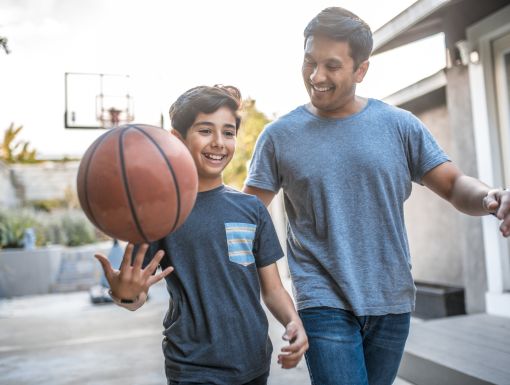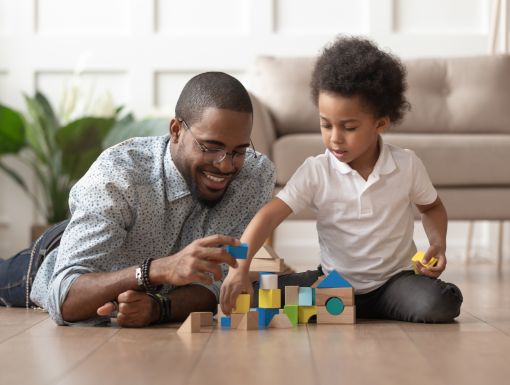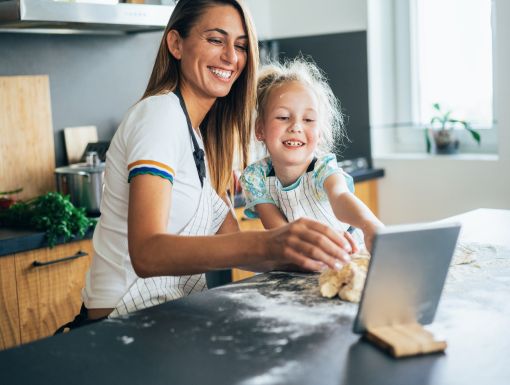
Preparing Kids for a Post-Quarantine Life
With stay-at-home orders lifting, life is changing yet again. While things aren’t completely back to normal, you and your family will begin socializing and venturing out a bit more. This time can seem like another huge shift for your child to get used to. During quarantine, they’ve gotten used to having extra attention while having you around most of the time. As daycares, parks and camps reopen, it is important to prepare your child to set them up for an easy transition. Here are some things to expect and tips on how to best prepare your child emotionally.
Know the signs
Transitioning back into activities that involve your child being away from you can be hard. Different behavior and separation anxiety are to be expected, so here are some of the most common signs and symptoms you may notice.
- Clinginess or whining
- Stomachaches
- Headaches
- Feeling stressed or worrying excessively
- Being reluctant to participate in activities
- Difficulty sleeping
- Acting out
- Needing to keep a parent in sight or at arm’s reach at all times
How to help your child
- Continue the structure at home. When you see your child in the mornings and evenings, continue to maintain structure at home to get them back in the habit of following routines. Remember, they’ve gone weeks with having a lot of freedom in their day, and this new shift could be hard for them.
- Frame the situation positively. Talk about all the new friends and memories they will make. Ask them what they are most excited to do that day. By talking to them about positive experiences, it will help ease their anxiety. Avoid framing any comments negatively, talking about your own experiences with being nervous or loaded questions. For instance, instead of saying, “Are you nervous about going swimming today?” try saying, “How are you feeling about swim lessons?” Another example is instead of saying, “I remember being scared my first day of camp, too,” try saying, “I went to camp when I was your age and ended up having so many great experiences!”
- Allow them to have some control. Let them pick out what clothes to wear, what they want packed in their lunch or what toy they can bring. This will help them get excited for the day ahead while also allowing them to feel like they are making their own choices.
- Let them know it’s OK to worry. Help them know that you are there to support them by letting your child know that it’s OK to be nervous about new situations. It’s important not to dwell too much on their worry to avoid feeding into their nerves more than necessary.
- Give your child extra attention when you can. When they come home, try to plan something special for them, even if it is just cuddling while watching a movie. Your child will notice the extra time and know that they are coming back to a supportive and loving environment.
- Discuss any worries with your child’s caretaker. Talk to your child’s teacher, babysitter, camp counselor, etc. about any concerns you or your child may have. If they know what behaviors to expect, it will be easier for them to address them when they happen.
- Don’t overly coddle them. Some parents think that it puts their child’s mind at ease to linger for a long goodbye or promise to pick them up if they don’t like it, but this can actually work your child up more as they focus on the thought of leaving. Most kids will adjust fairly quickly after you leave them as they begin to play and have fun!
- Continue teaching and practicing coping strategies. Talk to your child about how they are feeling physically. Are they having stomachaches, headaches or stiff muscles? Help them understand why they may feel that way. You can explain that when we are worried or nervous, sometimes our body feels it to, and that is OK! Tell your child that when they start to feel that way, there are several things they can do to feel better, such as:
- Take a deep breath and count to 3 or 5
- Call a friend or family member
- Write or draw about how they feel
- Try yoga
- Go for a walk
- Take a warm bath
- Read a book
- Teach your child about the safety procedures our community is taking. To keep your child safe, they may be required to wear a mask, practice social distancing or have their temperature checked while at camp, school, field trips, doctor’s appointments and more. Wearing a mask can seem uncomfortable at first, as it might feel hot, tight or itchy. The best way to acclimate your child to this new rule, is by practicing at home. You can also practice temperature checks by taking your child’s temperature and showing it to them. Discuss a healthy temperature and an unhealthy temperature. Explain what social distancing is and the importance of practicing it by using a tape measure to measure out 6 feet and have your family practice. For younger children you can explain when you keep others safe, you can be a hero too!
The key to reducing your child’s worry about this new normal, is to be open and calm. Calmly discuss the strategies and explain that everything you are doing keeps people safe – and your child can help keep people safe, which is an important responsibility! Remind your child, that they are part of a community that is working together to stay healthy, and they are an important member of the team.
The Michael R. Boh Center for Child Development is dedicated to improving the lives of children and adolescents. If you feel like your child could use some help dealing with separation anxiety, behavioral issues or development, visit Ochsner.org/boh for more information.
The information in this blog post is accurate at the time of publication. However, as the situation surrounding COVID-19 continues to change, it's possible that information has changed since being published. While Ochsner Health is trying to keep our blog posts as up-to-date as possible, we also encourage readers to stay informed on news and recommendations by using the CDC website.



